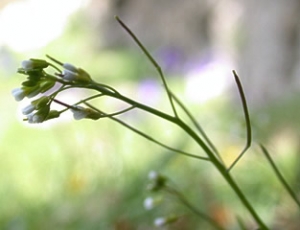Evolutionary dynamics and genetic basis of dominance: sporophytic self-incompatibility in the Brassicaceae as a case study.

Project coordinator:
Vincent Castric
Unité Evo-Eco-Paléo (EEP) - UMR 8198
CNRS / Université de Lille - Sciences et Technologies
Batiment SN2, bureau 207
59655 Villeneuve d'Ascq - FRANCE
Project partners:
Hélène Touzet at the LIFL - Laboratoire d’Informatique Fondamentale de Lille
CNRS-INRIA- FRANCE
Isabelle Loisy and Thierry Gaude at the laboratory « Reproduction et Developpement des Plantes »
ENS Lyon CNRS - FRANCE
Website:
http://www.agence-nationale-recherche.fr/Project-ANR-11-JSV7-0008
http://eep.univ-lille.fr/fr/perso-vincent-castric
Abstract:
Dominance, the genetic phenomenon whereby one of the two alleles at a diploid locus is masked at the phenotypic level, is one of the earliest observations of classical genetics, yet also one whose genetic basis and evolution remain poorly understood. Dominance modifiers, i.e. genetic elements controlling the dominance of alleles at other genes, have been postulated by Ronald A. Fisher as early as 1928, but they were never documented since then. The question of whether these genetic elements indeed existed and how strongly natural selection could act on them violently opposed him to Sewall Wright in the 30’s.Earlier last year, Tarutani et al. (2010) identified, embedded within the gene cluster controlling self-incompatibility in the Brassicaceae, a trans-acting small RNA acting as dominance modifier of the gene controlling pollen specificity. This discovery provides an elegant mechanistic model for dominance/recessivity interaction in pollen, and hence the first description of dominance modifiers whose existence had been postulated since Fisher,but never documented yet. This opens up the exciting opportunity to address long-standing mechanistic as well as evolutionary issues, such as the type of mutations causing changes in dominance or how intensely natural selection acts on dominance modifiers. In this proposal, we propose to take advantage of this recent discovery and of our previous theoretical and empirical work to shed new light on the evolutionary dynamics and genetic basis of dominance, using an integrative multidisciplinary framework combining (1) phenotypic approaches to describe the dominance network among alleles at the gene controlling pollen self-incompatibility specificity in the plant Arabidopsis halleri; (2) genomic approaches to compare in silico the small RNA repertoire of dominant and recessive haplotypes and validate the proposed mechanism for the control of dominance in a genetic system characterized by strong multiallelism; (3) functional approaches to validate some of the candidate motifs; (4) theoretical approaches to explore how the control of dominance by small RNAs changes our understanding of how dominance can evolve in this genetic system, in particular focusing on the coevolution and asymetry it entails between small RNAs and their targets; (5) molecular evolution approaches to evaluate the level of functional constraint on small RNAs and their target sites.
CNRGV involvement:
BAC library construction and screening
Responsible: William Marande
Publications related to the project:
